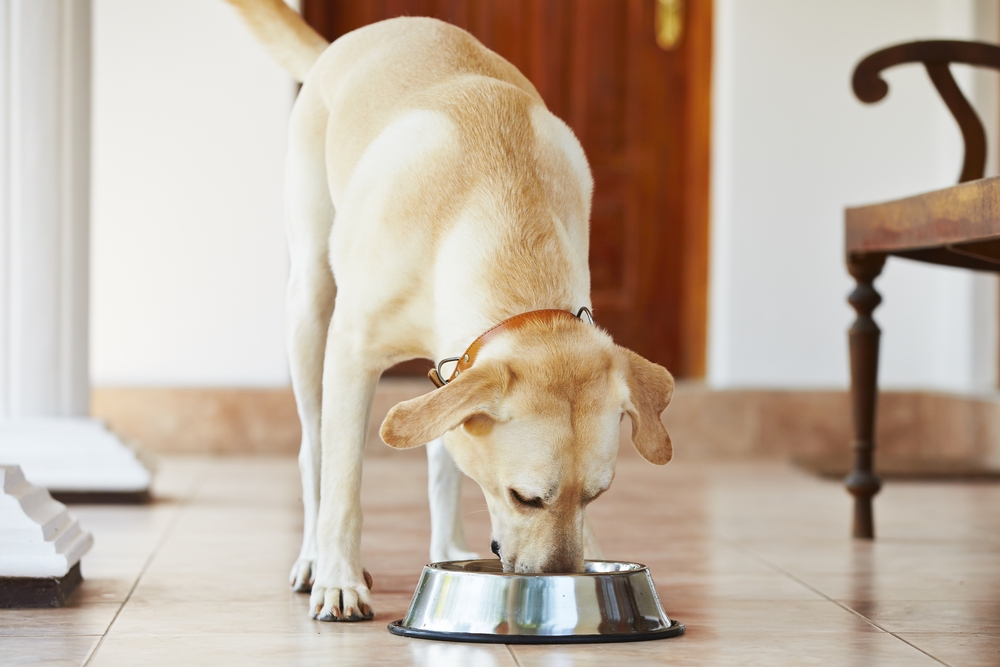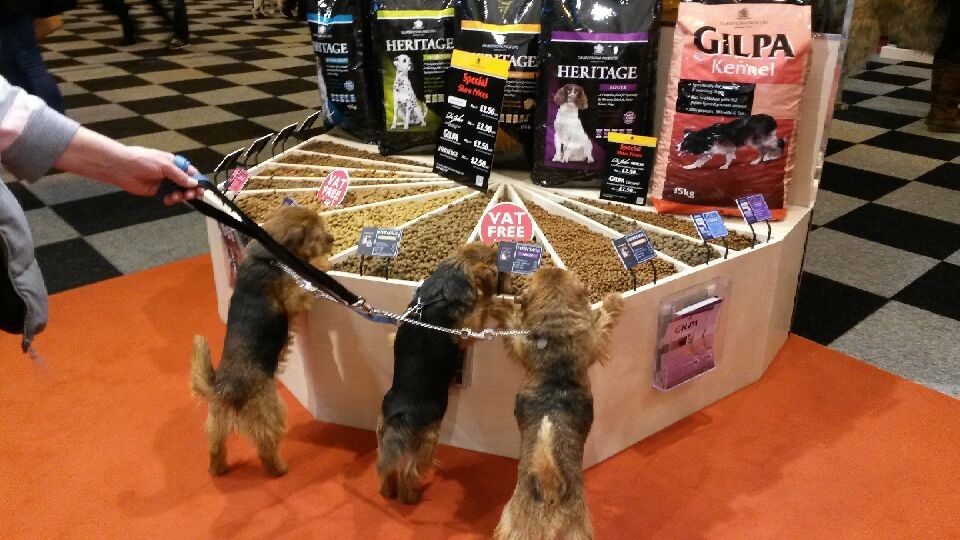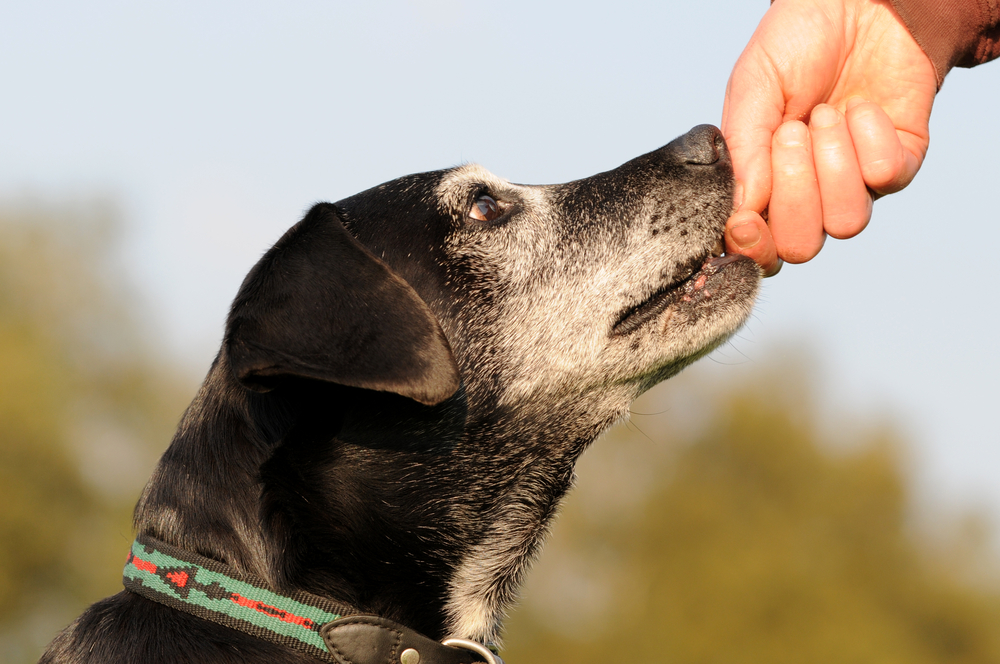Dog Food Debate: Wet Vs Dry
17/12/2014
One of the biggest debates that goes back and forth between dog food specialists is over wet and dry dog food. And with much of it coming down to the personal taste of the dog and the personal opinion of the owner, the debate will most likely continue! However, there is a bewildering variety of different food types for dogs available now: cans, trays, pouches, semi moist and dry, so it’s definitely worth doing some research. Now, to make sure that you have all the information to hand in order to make an informed decision, let’s take a look at the main differences between wet and dry dog food so that you can make the right decision for your dog.
 In terms of palatability, wet food is often favoured by fussy dogs because it is easier to wolf down. However, on the flip side of this, certain dogs may overeat a food that is more palatable if careful attention isn’t paid to their portions and their condition. This can lead to health issues, from diarrhea in the short term to weight and joint problems in the long term. Dry dog food on the other hand can be moistened with a little gravy or water for puppies or fussy dogs adjusting to a kibble food and they will soon get used to it and find it just as palatable as wet food.
In terms of palatability, wet food is often favoured by fussy dogs because it is easier to wolf down. However, on the flip side of this, certain dogs may overeat a food that is more palatable if careful attention isn’t paid to their portions and their condition. This can lead to health issues, from diarrhea in the short term to weight and joint problems in the long term. Dry dog food on the other hand can be moistened with a little gravy or water for puppies or fussy dogs adjusting to a kibble food and they will soon get used to it and find it just as palatable as wet food.
Dental benefits are often overlooked, but are a good reason for feeding a dry food, as crunching into the biscuits can help to abrade and clean teeth as well as teaching your dog to eat slowly and carefully, how to chew safely and use his teeth appropriately (not on your furniture or TV remote).
Choosing the right piece size is important though to encourage good digestion and to satisfy their appetite. If you have a large or giant breed dog, (e.g. Labrador, GSD) at meal times he/she should first break into the biscuit and chew before swallowing, so a large biscuit based diet like Gilpa Kennel or Dr John Gold is ideal. Whereas, with a small or toy breed (Terrier, Pug etc.), the biscuit needs to be small too, as large pieces can be swallowed too quickly and lead to choking. Good diets for these breeds are Gilpa Trinkets or Dr John Titanium.
It is worth remembering that wet foods are more likely to cause poor oral health as they can contain sugars or syrups and require less vigorous chewing so adding in a dental chew to your dog’s daily diet and regular teeth brushing sessions will be necessary if you feed an exclusively wet diet to your dog.
Dogs eating wet food need to consume a larger amount to receive the same nutrition as a smaller portion of dry food. This is due to the increased volume from added moisture; again leaving the dog at risk of either overeating or insufficient nutrients. In addition to this, wet dog food in cans or pouches is harder to portion out than dry dog food in a bag, which can be either weighed out to the correct portion or measured out by volume once the portion is established. This makes it much easier to control portion sizes and therefore a dog’s weight, though responsible dog owners should also be feeding to condition rather than relying on portion size guidelines on dog food packaging alone.
It may sound a little odd, but a factor worth considering when choosing between wet and dry diets, is your dog’s coat. Dogs with a white or fawn coloured coat and those with long coats and beards are best fed on a dry food. This is because wet foods can stain their faces and removing the staining can be difficult. In some cases you will have to wait for this to grow out. Long beards will often get very messy and sticky with wet food and could become unhygienic areas, so careful cleaning after meals is required.
 Whilst wet dog food contains fewer preservatives thanks to the canning process, the preservatives will often include sugars which it’s important to minimise for older dogs and those with diabetes. However, dry foods rarely contain these sugars, as they are not needed to preserve the ingredients and dry foods tend to rely on natural meaty aromas and flavours brought out when the diet is moistened instead. Manufacturers of dry dog food, such as Gilbertson & Page, carefully monitor the ingredients and manufacturing processes for their dog food to ensure it contains all the essential nutrients to maintain a dog’s health. Not only that, but they also have a wide range of dog foods that cater for any dog’s dietary needs, whether they are a puppy, a senior dog, a dog with sensitive stomach or a working dog.
Whilst wet dog food contains fewer preservatives thanks to the canning process, the preservatives will often include sugars which it’s important to minimise for older dogs and those with diabetes. However, dry foods rarely contain these sugars, as they are not needed to preserve the ingredients and dry foods tend to rely on natural meaty aromas and flavours brought out when the diet is moistened instead. Manufacturers of dry dog food, such as Gilbertson & Page, carefully monitor the ingredients and manufacturing processes for their dog food to ensure it contains all the essential nutrients to maintain a dog’s health. Not only that, but they also have a wide range of dog foods that cater for any dog’s dietary needs, whether they are a puppy, a senior dog, a dog with sensitive stomach or a working dog.
In terms of storage, any leftovers from a can or pouch can only be kept in the refrigerator for up to 48 hours before they must be disposed of, whereas dry food will only be dished out in the required portion, therefore creating very little waste. In a similar way, any wet food left in a bowl is at risk of breeding dangerous bacteria and should also be disposed of, whereas dry kibble can be left in the bowl longer. Taking into account the higher volume of wet food, cans of dog food require more storage and more trips to the supermarket than dry food, which can be bought in large bags and conveniently stored in dry, cool conditions..
 When comparing wet dog food in cans to dry food in bags, without a doubt dry dog food is better for the environment. There is less processing and packaging for a start and less landfill is created. Granted, both cans and bags can be recycled, depending on your local recycling services, but this does rely on responsible owners being ethically minded. With the extra processing and packaging involved in producing a can of dog food and the extra transport costs involved, these costs are naturally passed on to the customer. Dry dog food often works out cheaper for the consumer.
When comparing wet dog food in cans to dry food in bags, without a doubt dry dog food is better for the environment. There is less processing and packaging for a start and less landfill is created. Granted, both cans and bags can be recycled, depending on your local recycling services, but this does rely on responsible owners being ethically minded. With the extra processing and packaging involved in producing a can of dog food and the extra transport costs involved, these costs are naturally passed on to the customer. Dry dog food often works out cheaper for the consumer.
If it is taken from their daily portion, dry food also makes a great tool and reward when training, without any of the worry of overfeeding your dog. A small handful can be placed in a plastic bag or pocket to hand out when necessary. It can also be stuffed inside a hidden dog toy or kong to encourage dogs to search and retrieve items either as a game providing great mental stimulation or as part of training. Do not attempt this with wet dog food!
For the environment, your bank balance and, most importantly, your dog, dry food offers the best option. Buying the best dog food that your budget will allow will leave you with a clear conscience that you are doing the best for your canine buddy. If you’d like to switch to a dry dog food, then making the change gradually over the course of a week will prevent your dog having an adverse reaction to a sudden change in diet. Ensure you have enough of their wet dog food in to last the week and then begin mixing in the dry dog food, gradually increasing the proportion of dry to wet until the switch is complete.
Gilbertson and Page’s Head of Nutrition, Samantha Ware, was consulted during the writing of this article. If you’d like more advice on choosing a dog food that caters specifically for your dog’s nutritional needs, the team at Gilbertson & Page are happy to help with any concerns or queries. Please contact info@gilpa.co.uk.


